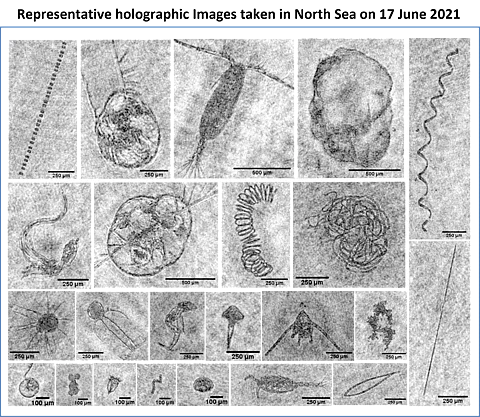

Early detection of sea lice could soon become a reality, as researchers trial a new technique using holographic cameras.
The technology, developed by a team of Scottish researchers, brings together holographic 3D imaging, machine learning and artificial intelligence, to detect whether sea lice larvae are present in sea water.
If successful, the approach could benefit fish farmers allowing faster detection of potential parasites and thus more effective management of fish health at aquaculture sites.
Until now, early detection of sea lice has been reliant on laboratory testing of water samples – a procedure which can take a few days for results to be returned.
"This new system could provide an opportunity for more regular and accurate monitoring to provide an early indication of potential sea lice risks and, by the end of this project, we hope to be ready for trialling the system at sea," said Scottish Association for Marine Science aquaculture researcher, Dr Helena Reinardy.
The advanced holographic cameras used in the project were developed at the University of Aberdeen. The researchers say that these give "significant advantages" in comparison to conventional photography, with their capacity to instantaneously record a volume of water and extract high-resolution images of the various particles present in the water. The resultant image, researchers say, provides data equivalent to thousands of standard photographs.
Meanwhile, AI technology will confront the challenge of identifying whcih of the microscopic zooplankton in the sample are sea lice. Often compared to "looking for a needle in a haystack" by zooplankton researchers, sea lice identification will be made possible through AI machine learning, trained with thousands of holographic images of sea lice provided by SAMS from a dedicated sea lice hatchery.
The research team, led by experts in engineering and digital holography from the University of Aberdeen, alongside the Scottish Association for Marine Science (SAMS), has recently secured £538,000 in support from partners including the UK Seafood Innovation Fund (SIF) and the Sustainable Aquaculture Innovation Centre (SAIC).
Salmon producer Mowi is also participating in the initiative, while electronics business Hi-Z 3D, the Scottish Environment Protection Agency (SEPA) and the Scottish Government's Marine Directorate also support the project.
"We have fantastic technology coming out of Scotland's universities and it is exciting to see how new data-led techniques could support aquaculture to thrive. This system could become a valuable tool in our armoury for sustainably tackling the challenge of sea lice on salmon farms," said SAIC Director, Heather Jones.
"Collaboration is a crucial element of its development, and this project could be transformational for fish health management, delivering economic value for the sector while minimising its environmental footprint."
